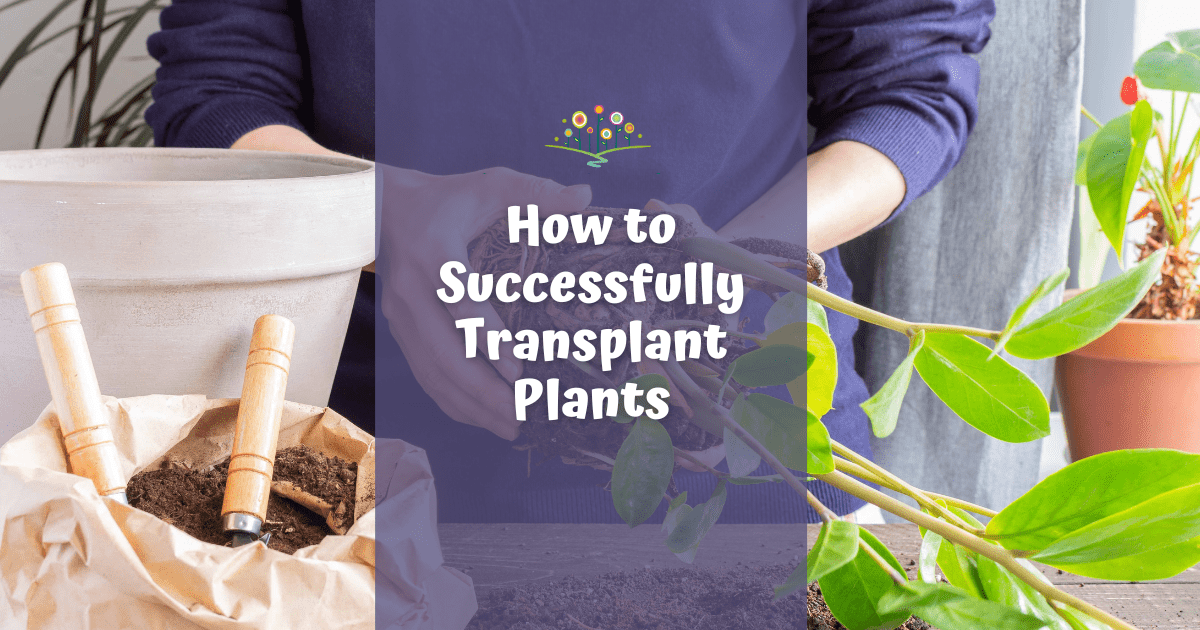
If you’re an “advanced-planning” type of gardener, you may have already started growing a few of your plants indoors. With the weather warming up, it’s almost time to move your seedlings to your full-sized garden! But, to maintain the health and longevity of your plants, it’s important to give them a little extra TLC during the transplanting process.
The transplanting process can be stressful for plants. So whether you’re transferring seedlings to a larger container or moving mature plants to a new location, it’s essential to do it with care. Done incorrectly, it may result in stunted growth or even death to your plants. However, with the right approach, transplanting provides plants with the necessary space and nutrients to thrive. Here are a few tips to help you get the best “plant” from your transplant.
Timing is Everything
The timing of transplanting depends on the type of plant and its growth stage. In general, it’s best to transplant seedlings when they have at least two sets of true leaves (usually two to four weeks after germination). When transplanting mature plants, it’s best to do so during the dormant season, like fall or early spring, when the plant is not actively growing.
Harden Off Your Seedlings
Hardening off your seedlings involves gradual exposure to outdoor conditions such as sunlight, wind, and changing temperatures. Begin by placing plants in a sheltered outdoor location for a few hours, gradually increasing their exposure over several days. It’s best to start this process a week or two before the transplant. If you notice any signs of stress, move your seedlings back to their indoor location and try again in a few days.
Prepare the Soil and Container
Before transplanting, you must prepare the soil and container to ensure optimal growing conditions. To allow for future growth, choose a container or location that’s slightly larger than the plant’s current root ball. Make sure the soil is nutrient-rich and well-draining to promote healthy root development. Adding a layer of compost or fertilizer to the soil provides your plants with an extra boost of nutrients.
Handle with Care
When it’s time to transplant, gently remove the plant from its current container or location, being careful not to damage the roots. If the plant is root-bound, loosen the roots by gently massaging them before transplanting. Avoid handling the plant by its stem, as this can cause damage to the delicate tissue.
Plant at the Correct Depth
When transplanting, it’s important to plant at the correct depth. Make sure the soil level is the same as the previous location, or slightly higher, to prevent water from pooling around the stem. (This can lead to rotting.) Firmly pressing the soil around the plant removes air pockets and allows root contact with the soil.
Water and Monitor
Watering the plant thoroughly settles the soil and provides necessary moisture to spur new growth. Monitor your plant closely in the following days and weeks, keeping an eye out for signs of stress or transplant shock, such as wilting and yellowing leaves. You may need to adjust the watering schedule or provide additional nutrients.
Transplanting plants can be a daunting task, but with the right strategy and a little extra TLC, your plants will continue to grow and thrive to their new location. If you need more advice, feel free to visit our Chippewa Valley Growers greenhouse for tips from our expert growers.
To see what’s happening around the greenhouse, sign up for our newsletter.



